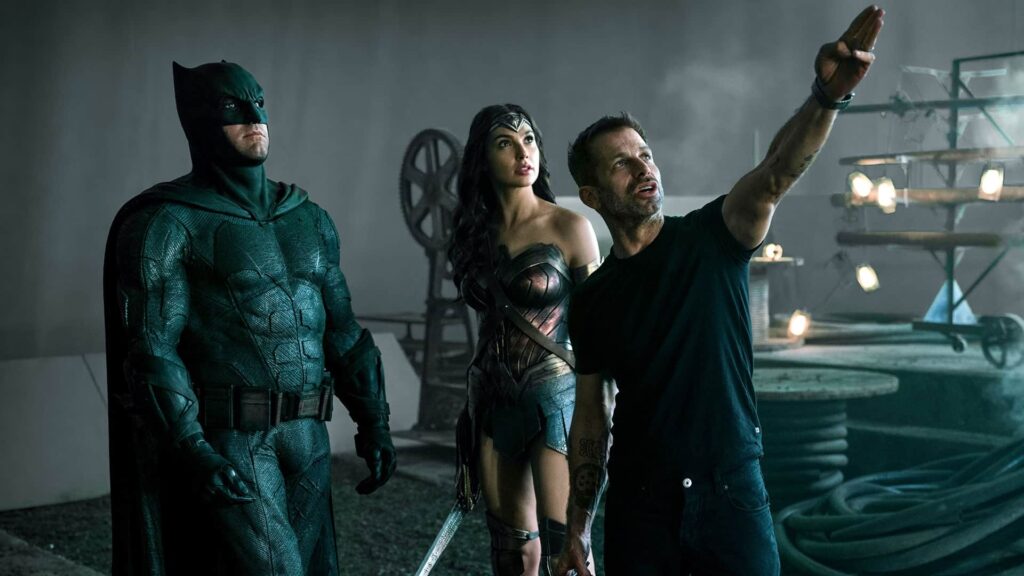It has been roughly two and a half years now since Justice League was unceremoniously kicked into theatres. A queasy sort of anticipation had formed around a production infamously plagued by stories of massive tonal, structural and script changes, Snyder’s exit partway through production and, most significantly, his replacement with Joss Whedon. In just a few months, Justice League had transformed from a highly anticipated superhero movie into a morbid curiosity for all but the DC faithful and the criminally insane. Despite raking in over $650 million, it still managed to lose Warner Brothers a zesty $60 million. Finally seeing it in theatres was fascinating for all the wrong reasons, like camcorder footage of an air show disaster.

Audiences were mostly indifferent, while critics had more fun trying to forensically dissect the movie than they did watching it. However, online groups of hardcore DC fans soon took to Twitter and began implementing some colourful methods to put the squeeze on Warner Bros. Their message was simple, unwavering, and persistent (so very persistent): gather up the fabled lost footage and #ReleaseTheSnyderCut.
And now, here we are. WB recently announced that “Zack Snyder’s Justice League” will be coming to the streaming service HBO Max in 2021, vindicating the fanbase with one hand and taking all their money in new subscriptions with the other. It’s been estimated the studio will need to spend over $30 million to finish the project, with Snyder and co returning for roughly four hours of murky, wistful, depressing hijinks that will reveal the original concept behind Justice League – for better or worse.
As you can imagine, the DC faithful have already ramped up their #ReleaseTheAyerCut campaign for the recently shredded Suicide Squad, with David Ayer himself saying recently on Twitter that his version would be “easy to complete”, adding “The film I made has never been seen”. It’s still early days, but it’s hard to imagine this particular wave receding any time soon; especially now that online streaming – which provides an almost unprecedented amount of flexibility for both consumers and production companies – is rapidly becoming the standard. In fact, there are plenty of recent films that could benefit from this treatment: How about Josh Trank’s original Fantastic 4 body horror concept? A Game of Thrones season 8 retcon? Phil Lord & Chris Miller’s aborted Han Solo movie? For something more out there, how about the fabled Alien 3 Fincher Cut? The possibilities are endless. Unfortunately, so too would be the practical and legal hurdles.

Snyder On Trial
Overall, this is a step in the right direction: it’s almost unheard of for a major studio to renege on such a significant decision, and it does seemingly promote the importance of preserving an artist’s vision. However, to moviegoers in general the good name of Snyder has become sullied by an overindulgent streak that often abandons basic reasoning for things that ‘look rad’. These are confusing times indeed: the guy who wrote and directed Sucker Punch is somehow now the public face of artistic sovereignty. It’s a poisoned chalice; like finding out that the dissolution of the Basque Nationalist group Eta had actually been single-handedly negotiated by Ted Nugent or Morrissey or some other awful person. You’d be conflicted too.
It’s easy to forget though – and mankind must never forget Sucker Punch, for the sake of future generations – that Snyder started off very strong; with 300, Dawn of the Dead and Watchmen. This plucky trio of pictures allowed the director to develop his own brand of schlocky, ultra-stylish, high- concept action/ horror, and showed he had a knack for smart soundtrack choices. Like a less sophisticated Christopher Nolan, Snyder at his best is ambitious, energetic, and just the right amount of self-aware. And his shot composition is super tight, yo.

Photo by Clay Enos – © 2016 Warner Bros.
So what happened with Snyder’s planned DCEU? It’s almost poetic, but it seems he found his own Kryptonite at DC, as Snyder’s increasingly misguided and inconsistent output from Man of Steel onwards was as much the fault of WB and DC executives as it was the director himself. Snyder bore the brunt of a well-documented campaign of intense micro-management and indecisiveness from bosses Kevin Tsujihara and Toby Emmerich, who regularly and rapidly changed their minds about the direction of the franchise, forcing him to entirely overhaul and pare down his long-term plans on several occasions.
When Man of Steel underperformed, Man of Steel 2 was hastily scrapped and Snyder was told to re-tool it into the more marketable Batman v Superman. However, WB cut roughly 45 minutes – which resulted in the nonsensical BvS theatrical cut – and then demoted Snyder from his position at the head of the DCEU when it tanked, as a thank-you. His replacements Jeff Johns and Peter Berg then made the decision to further trim down Snyder’s original plans for Justice League from two films down to one, and with the blessing of Tsujihara and Emmerich – hired Joss Whedon to finish the job. Looking at the exhausting list of last-minute course corrections and compromises, it’s easy to empathise with the director. The sad, ironic conclusion of all this, is that for all its championing of artistic integrity, the ‘Snyder Cut’ that we will eventually see is still going to be the result of a years-long campaign of studio interference and compromises.

The grown-ups are here
But the real twist? Recent developments seem to propose that the release of Zack Snyder’s Justice League was nothing to do with Warner or DC at all, the decision instead coming from their parent company AT&T. After Disney+ released The Mandalorian – becoming an overnight success in the process – AT&T reportedly demanded their new streaming platform have their own mega-franchise exclusive to stay competitive. It’s unlikely that AT&T cares, but this order from on high will force Warner and DC to reconcile with – and be held accountable for – what amounted to catastrophic mismanagement of a multi-million dollar franchise.
Were it not for the AT&T mandate, it is unlikely The Snyder Cut would have ever been greenlit. It seems that after spending upwards of $100 million actively making a film worse – effectively ending the franchise it was meant to kick start – the best defence that came to mind was “Trust me, the other version was even more terrible.” And with Snyder’s footage buried, few could disprove that claim.
Despite his shortcomings, there is still plenty of evidence that Snyder is at the very least a capable director who deserves to be judged on his own merits. The additional scenes and dialogue in the Batman v Superman Ultimate Cut, for example, fix many of the smaller lapses in character logic and plotting, giving some hope. Unfortunately, all the major signature Snyder issues are still present: a generous sprinkling of key mis-steps in either character or plot logic that are so thunderously stupid that they throw into question whether or not Snyder has ever interacted with another human. You know the ones. Overcoming this would be Snyder’s first step towards redemption.

So, how will fans react when Matt Reeves’ incredibly promising but (already) divisive reboot The Batman is released? It might not be long before audiences start to suffer from Batman fatigue. So long as AT&T get their share of that sweet, sweet Disney+ money, the industry could be feeling the ramifications of The Snyder Cut for years. Who would have guessed: the DCEU had been producing their own complex, dramatic narrative of heroes, villains, megalomaniacal plots and benevolent overlords this whole time; it was just happening on the other side of the camera.
#ReleaseTheReevesCut.
